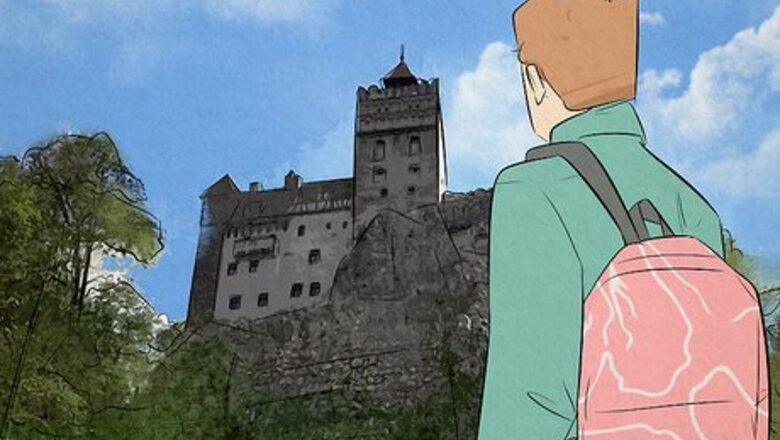
views
- Go on a historical journey of Vlad the Impaler’s Romania—the inspiration for Bram Stoker’s Dracula.
- Explore vampire lore by visiting the sites of alleged real-life vampires, like Kraków’s Rynek Underground or Rhode Island’s Grave of Mercy Brown.
- Fans of Twilight, Anne Rice, and Buffy can visit filming locations and celebrate with other fans at local festivals.
Transylvania, Romania
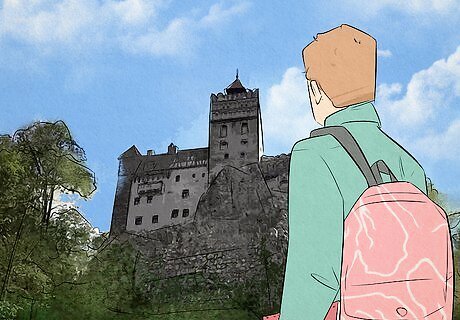
Check out the birthplace of Vlad the Impaler, the inspiration for Dracula. Vlad III Dracula, a.k.a. “Vlad the Impaler,” was a brutal 15th-century warlord and ruler of Wallachia, a province of modern-day Romania. He was allegedly born in Sighisoara, Transylvania, and you can visit his birthplace. While there’s not enough evidence to confirm Sighisoara as Vlad’s birthplace, Transylvania is now permanently linked to vampires, making it the perfect place for vamp fans to visit. Vlad the Impaler got his name for his unusual way of executing his enemies, the Ottomans: he would impale them with wooden stakes. (Sound familiar?)
Curtea Veche, Bucharest, Romania

Meet Vlad face-to-face—er, face-to-bust. In the 1400s, Curtea Veche ("Old Princely Court") served as a fortress for Vlad the Impaler to protect Romania’s southern border (in what is now known as Bucharest) against Turkish invaders. Today, the place is mostly ruins, but you can visit the famous bust of Vlad the Impaler, still keeping his watch....
Poenari Castle, Romania
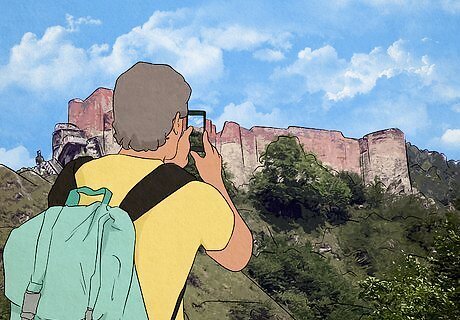
Visit Vlad the Impaler’s fortress. Poenari Castle was built in the 1200s, but when Vlad the Impaler came upon the abandoned structure in the 15th century, he claimed it as one of his many fortresses against Ottoman invaders. Some people believe the castle even served as inspiration for Dracula’s castle in Stoker’s novel, though this isn’t confirmed. In any case, this beautiful and looming fortress—only a few hours away from Transylvania—is well worth a visit for history buffs and vampire lovers alike.
Corvin Castle, Romania
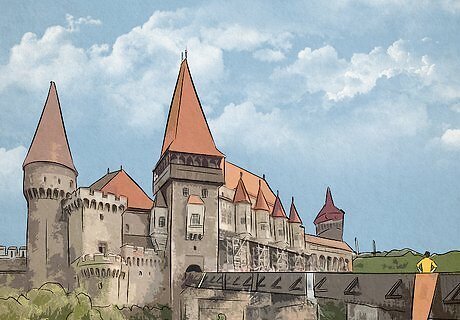
One more stop on the Vlad tour…. While you’re traveling in Romania, check out the Corvin Castle, a 15th-century fortress designed to defend against the Ottoman Empire. Allegedly, Vlad the Impaler was imprisoned here for 7 years and eventually went mad. Vlad was reportedly imprisoned by a leading Hungarian noble, John Hunyadi, before being freed and ultimately entering a political alliance with Hunyadi. Originally designed as a sturdy fortress, over the centuries, the castle was renovated to look more fairytale-esque.
Whitby, North Yorkshire, England
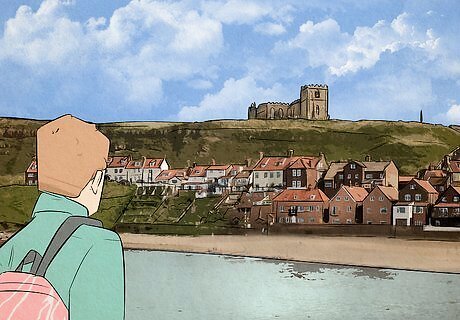
See the inspiration for Dracula and enjoy the largest goth fest in the world. Gloomy, gothic Whitby, a coastal town in northern England notable for its dramatic abbey ruins and spooky churches, heavily inspired Bram Stoker while he wrote Dracula. It was in a coffee shop in Whitby in 1890 that Stoker came upon a book about Vlad the Impaler, a.k.a. “Dracula,” or “son of the dragon,” and decided to use the name for his novel. The wreck of the Russian Dmitry in Whitby served as inspiration for the Demeter, the ship that carries Dracula to Whitby in the novel. Today, you can visit the ghostly Whitby Abbey ruins mentioned in the novel and wander through the church’s graveyard. Stoker even stole some names for his book from the graveyard’s tombstones! Inspired by Dracula, Whitby plays host to the largest goth festival in the world every October. Come as a Victorian vampire or modern-day goth punk and dance to some of the biggest names in alternative music.
New Orleans, Louisiana

Anne Rice, anyone? If you loved Interview with a Vampire, New Orleans should be on your travel itinerary. Stop by sets from the iconic movie, including the Destrehan Plantation, Lafayette Cemetery No. 1, Laurel Valley Village Store, and even Anne Rice’s house. Many of the filming locations from Interview with a Vampire were destroyed in Hurricane Katrina in 2005, but there’s still a lot to see. Aside from filming locations, there's also the Boutique du Vampyre, a store selling vampire books, art, and costumes. There’s also a lot of history to these places: Destrehan Plantation not only figured prominently in the film, but it was also the site of the 1811 German Coast Uprising, the largest slave revolt in the country.
Los Angeles
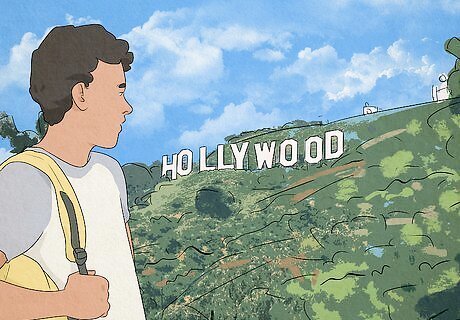
LA, home to some of TV's most famous vampires. Los Angeles may translate to “city of angels,” but let’s be real, it’s more like the city of vampires (unless you’re thinking of the vampire Angel from Buffy, in which case it’s both). Yep, Buffy the Vampire Slayer was filmed in LA! Visit the set of Sunnydale High and check out the hellmouth for yourself, or pop by Frank Lloyd Wright’s famous Ennis House, a.k.a. Angel’s home in the TV show. There’s more: True Blood might take place in Louisiana, but it was filmed in Long Beach, and guess what? You can stop by Fangtasia IRL—the TV bar was filmed at the real-life Alex’s Bar.
The Grave of Mercy Brown, Exeter, Rhode Island
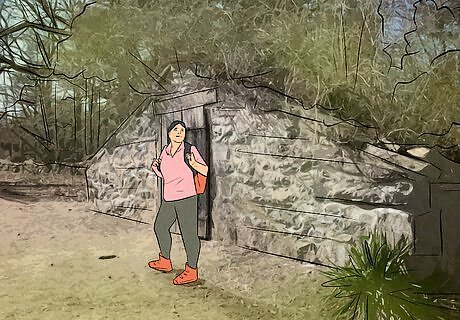
If it’s chills you’re after, Brown’s grave will do the trick. This one’s a little too real for us, but you can’t deny it’s fascinating. After Mercy Brown died of tuberculosis in 1892, the local villagers, believing her to be a vampire, mutilated her corpse. Because Brown died of a mysterious illness (what we now know as tuberculosis) and because her corpse seemed to be suspiciously well-preserved, the citizens of Exeter worried she was really a vampire. They cut out her heart and burned it, and then they had her brother, Edwin (who was currently sick with tuberculosis), drink the ashes. (He still died.) Today, Mercy Brown is known as “New England’s Last Vampire.” You can find her grave in Chestnut Hill Cemetery, a small graveyard off of Ten Rod Road, a few miles off I-95 in Exeter, Rhode Island.
Forks, Washington

Come for Twilight, stay for the fishing. Forks is a popular logging and sport fishing town, but since Stephenie Meyer made it the setting of Twilight in 2005, it’s become the site of a Twilight tour and a yearly Forever Twilight in Forks Festival every September. During the festival, which falls on the weekend closest to Bella’s birthday (September 13), fans enjoy a variety of fun events and entertainment. Year-round, you can go on a self-guided tour of Twilight stops around town, including the Swan house and the real La Push, and check out props and costumes from the movies. But there’s more to Forks than Twilight: be sure to carve out time to hike, swim, fish, or just sightsee at the town’s beautiful rainforests and beaches.
Mystic Falls, a.k.a. Covington, Georgia

Calling all fans of The Vampire Diaries! The popular TV show was set in the fictional town of Mystic Falls, Virginia, but it was filmed in Covington. Come to Covington for a Mystic Falls Tour, a 3-hour adventure for Vampire Diaries fans to explore sets from the show. On the tour, you’ll get to visit the Mystic Grill, the Town Square, the Gilbert House, and the Lockwood Mansion (Worthington Manor, in real life). You can also see props and costumes from the show at the Mystic Falls museum.
Musée des Vampires, Lilas, Paris

The most romantic city on Earth, now with fangs. Visit the Musée des Vampires (Vampire Museum) in Paris to check out writer and self-proclaimed “vampirologist” Jacques Sirgent’s massive collection of vampire memorabilia. This offbeat hidden gem is located in an allegedly haunted private house in the Paris suburb of Lilas. The museum contains vampire film posters, vampire masks, and a plethora of autographed photos of actors who have played Dracula over the years. It also features historical curiosities like an anti-vampire protection kit from the 19th century and a library of rare vampirology books.
Rynek Underground, Kraków, Poland
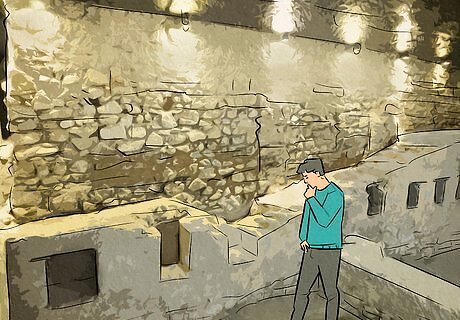
Visit the museum of historic Kraków and see how vampires were buried. An underground excavation of Kraków’s market square in 2005 led to the discovery of the 700-plus-year-old ruins of a medieval settlement. Today, an underground museum showcases the artifacts discovered. The excavation turned up thoroughfares, aqueducts, a cemetery, and the remnants of merchant stalls. The settlement was destroyed by invading Tatars in 1241. Rynek Underground was opened in 2010 to showcase the remnants unearthed. It also incorporates holograms of medieval Krakovians to show what daily life was like in the 14th century. The museum includes displays depicting medieval burial traditions, including how to bury a vampire: in the fetal position, with hands tied and heads removed and placed beneath their feet. Tickets go fast for Rynek Underground, so be sure to buy in advance if you want to check it out (and we know you do).

















Comments
0 comment